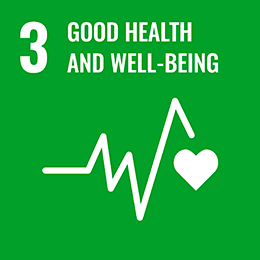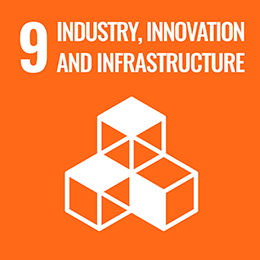Smart Health

Share this article
Patient Power
“Healthy citizens are the greatest asset any country can have” ― Winston S. Churchill
At a time when hugging is potentially lethal and we clap hospital heroes from the safety of our homes, the realisation dawns that many of us have taken for granted the funding and efficiency of our healthcare systems.
World citizens now have a handy gauge to judge the administrative efficiency of their rulers (elected and unelected). Geo-politics and global commerce will alter, as supply chains (at least of critical industries) are on-shored. And very few will remain in China. Health, its data and delivery, will become front of mind, globally.
Investing in centralised open-to-all healthcare that is free at the point of entry seems pertinent more than ever, even if it remains controversial in the US. It can, though, be no coincidence that the top two countries in the CEOWorld magazine’s Health Care Index—Taiwan and South Korea—have also had the best Covid-19 responses.
And, more impressively, despite the highest proportion to population of confirmed cases in the world, Iceland did not close for business. So, what did the country that is almost half way down the Health Care Index do differently?
Iceland’s national health service strategy of tracking and testing was aimed at both containing and mitigating the virus. Testing more than five times as many people as South Korea meant Iceland’s aggressive quarantine policy for those tested positive (and those they were in contact with) made showdowns unnecessary. At the time of writing, the virus had only claimed 10 lives.
At the same time, scientists at deCODE Genetics, a biopharma company, screened random samples of the Icelandic population to discover that roughly 0.8% of the population was infected with up to 40 mutations of the virus and that 50% of the carriers were asymptomatic, according to the New England Journal of Medicine.
Meanwhile it could be genomics—essential for personalised healthcare—that explains why the coronavirus infects everyone irrespective of age, race or sex, but the disease it causes, Covid-19, leaves some asymptomatic, others with flu-like symptoms and a large number requiring respirators and intensive care.
Consumer DNA database, 23andMe is hoping to enrol thousands of its US customers in a genome-wide association study to identifying specific genetic variants that might be associated with disease severity. While rapid detection testing kits, such as those being developed on iHealthtech’s enVision platform, and the hunt for a Covid-19 vaccine, are boosting the biotechnology industry, currently valued at $449 billion.
Existing biotech start-ups are widening their remit to include therapies for the coronavirus. For example Celularity’s new agreement with United Therapeutics, and GlaxoSmithKline, which is investing $250 million in San Francisco-based start-up Vir Biotechnology that already has two viral antibodies for Covid-19.
Technology not healthcare will be at the heart of a post pandemic recovery, starting with contact tracing apps, such as the ones being designed jointly by Google and Apple that could become the norm for life after lock down. Singapore used the TraceTogether app, which, like Iceland, has meant it avoided shutting down businesses and schools.
While the Kingdom of Bahrain’s GPS-tracking electronic bracelets might be a step too far, the UK is looking at apps to track people. Both Russia and China, which is working with Alibaba and Tencent, have gone for quick response (QR) codes that dictate who may or may not enter cafes, restaurants and shopping malls.
Disease control will be driven by data (despite the obvious concerns around civil liberties as Covtech surveillance apps become the ‘norm’). This will accelerate the development of digital epidemiology tools such as artificial intelligence-driven early warning systems such as Program for Monitoring Emerging Diseases (ProMed) and HealthMap, which highlighted the coronavirus.
Data-based technology for tracking exists. Kinsa’s smart thermometers and resting heart-rate and sleep duration data from Fitbit and other wearable devices, for influenza, and medical tattoos for diabetes and kidney disease. Despite Google’s aborted attempt at glucose-sensing smart contact lenses, it’s only a matter of time before these and smart hearing aids will be able to monitor and manage conditions.
The obvious financial beneficiaries of the global lock-down are Amazon, Netflix and for now Zoom, but the coronavirus is accelerating the tech-driven disruption of the healthcare industry that is projected to reach $10 trillion by 2022. This is disruption is evidenced by the rise in conversational AI, currently used by the CDC and World Health Organisation.
More commonly known as chatbots, this likely to become the digital portal for interactive ‘tele’ healthcare. Since the launch of the first platform Teladoc Health in 2005 and later Medtronic, telehealth, the virtual clinic—a market predicted to grow at a rate of 22.7% to reach $16 billion by 2024—is going to replace going to the doctors sooner than we think.
Systems that will underpin the future of healthcare are being stress-tested on the Covid-19 frontlines. From the normalisation of telehealth, to electronic health record platforms, such as Cerner picked to power London’s new temporary 4000-bed Nightingale hospital.
The first person diagnosed with the coronavirus in the US was treated by a few medical workers and a robot, which many see the perfect opportunity to jump-start the development of medical robot technologies, ideal for use in disinfection, delivering medications and food, measuring vital signs and assisting border controls.
Beyond Covid-19, robotics, which falls under the $188 billion health/med tech umbrella—and projected to reach $391 billion by 2024—will see wearable exoskeletons help paralysis patients walk again, and robot-assisted surgery, for which virtual reality will find a new role outside the gaming industry.
With life expectancy increasing—currently 11% of the world is over 65—the future of medicine is smart health; analytics-enabled, individualised well-being programmes that will not just treat disease, but increasingly with data-driven diagnostics and genomics, move towards ex ante healthcare, preventing, rather than treating sickness.
Photo: © Niki Natarajan 2018
Artist: Rich Simmons
Article for information only. All content is created and published by CdR Capital SA. The views and opinions expressed in this article are those of the author(s). Information on this website is only directed at professional, institutional or qualified investors and is not suitable for retail investors. None of the material contained on this website is intended to constitute an offer to sell, or an invitation or solicitation of an offer to buy any product or service. Nothing in this website, or article, should be construed as investment, tax, legal or other advice.
Related articles
Blade Runner
It’s almost 2019. Flying police cars have not happened; the acid rain debate shelved; and Shimago-Domínguez' globalisation has been and gone. Ridley Scott’s future hit the screens 35 years ago, but some of this cult film noir’s themes are very prescient.

Big Data & DNA
With epigenetics and cheaper ways to check for faulty genes, DNA has the potential to be big business. By next year, the DNA sequencing market could hit $10 billion and that’s before the profits of the consumer industries have been taken into account.

Rise of the Robots
“I believe that at the end of the century the use of words and general educated opinion will have altered so much that one will be able to speak of machines thinking without expecting to be contradicted" ― Alan Turing, Computing Machinery and Intelligence




